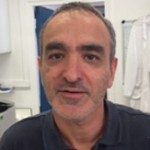Link to Pubmed [PMID] – 15217086
J. Neuropathol. Exp. Neurol. 2004 Jun;63(6):574-86
Msx1 is a regulatory gene involved in epithelio-mesenchymal interactions in limb formation and organogenesis. In the embryonic CNS, the Msx1 gene is expressed along the dorsal midline. Msx1 mutant mice have been obtained by insertion of the nlacZ gene in the Msx1 homeodomain. The most important features of homozygous mutants that we observed were the absence or malformation of the posterior commissure (PC) and of the subcommissural organ (SCO), the collapse of the cerebral aqueduct, and the development of hydrocephalus. Heterozygous mutants developed abnormal PC and reduced SCO, as revealed by specific antibodies against SCO secretory glycoproteins. About one third of the heterozygous mutants also showed hydrocephalus. Other defects displayed by homozygous mutants were ependymal denudation, subventricular cavitations and edema, and underdevelopment of the pineal gland and subfornical organ. Some homozygous mutants developed both SCO and PC, probably as a consequence of genetic redundancy with Msx2. However, these mutants did not show SCO-immunoreactive glycoproteins and displayed obstructive hydrocephalus. This suggests that Msx1 is necessary for the synthesis of SCO glycoproteins, which would then be required for the maintenance of an open aqueduct.
